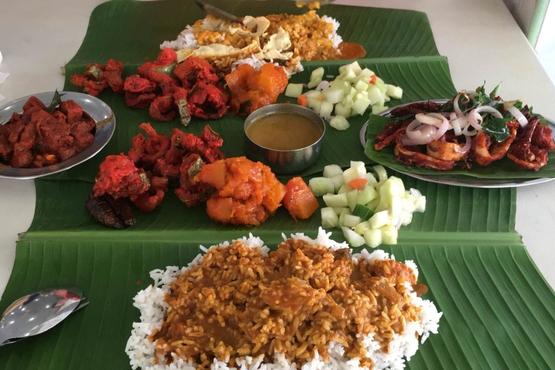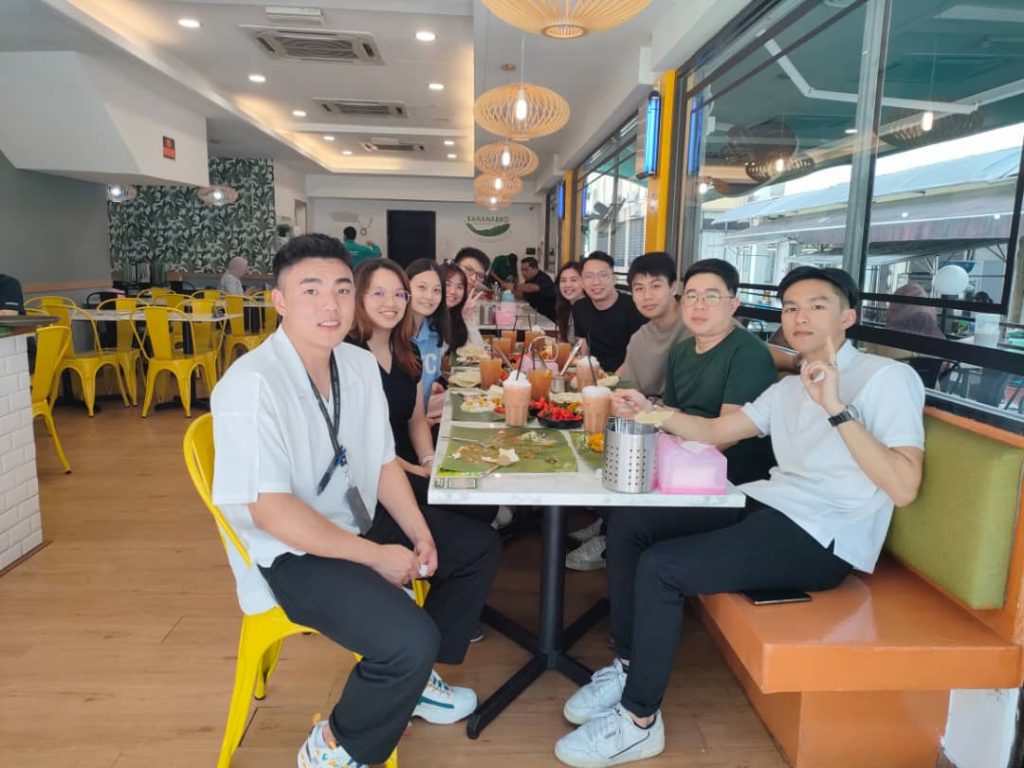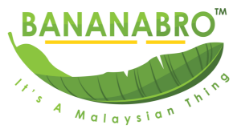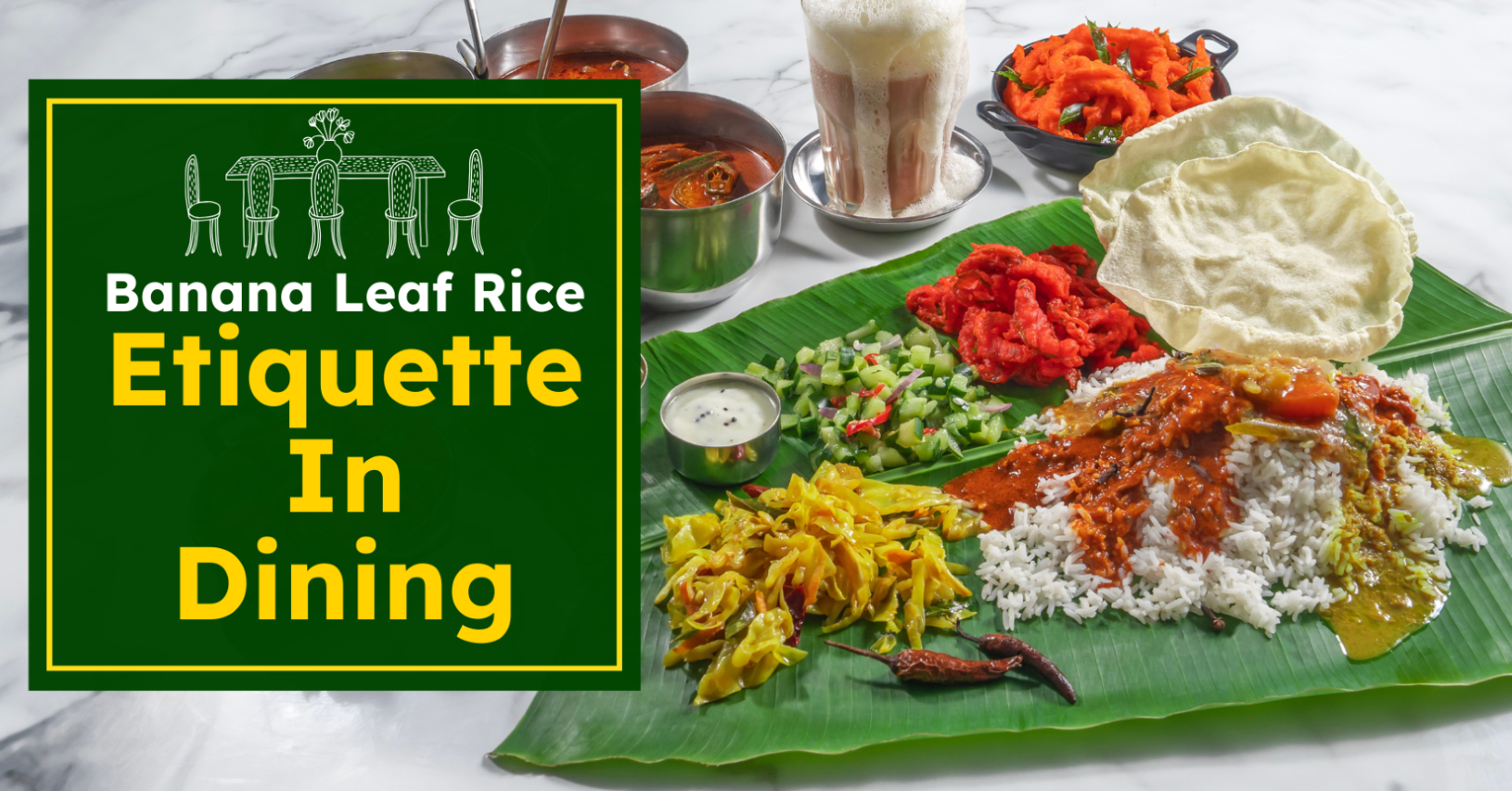Banana leaf rice is a traditional South Indian method of serving a variety of rice, vegetable dishes, and curries on a banana leaf. The meal is typically accompanied by pickles, papadum, and other condiments. The Indian community deeply roots itself in the practice of eating banana leaf rice, often enjoying it during special occasions or as a means of bonding with friends and family.
However, the traditional practice of banana leaf rice has evolved over time, and modern etiquette and cultural significance have taken on new meanings. There is a shift towards understanding the natural resources, environmental impact of using banana leaves and promoting sustainable practices. Additionally, there is an exploration of global influences on the traditional meal, leading to fusion dishes and new interpretations of the classic banana leaf rice experience.
In the following exploration, we will delve into the modern etiquette and cultural significance surrounding the practice of eating banana leaf rice, and how it continues to adapt and thrive in today’s diverse culinary landscape.
Mention of the cultural significance in Malaysia
Malay dishes holds immense cultural significance in Malaysia, with its roots deeply embedded in the country’s historical influences and traditional practices. The culinary heritage of Malay dishes reflects the assimilation and acculturation among various ethnic groups, making it a true representation of Malaysia’s diverse gastronomical heritage. The use of banana leaves to wrap food and the wide variety of kuih (sweet snacks or desserts) are traditional practices that are synonymous with Malay Communities and are an integral part of traditional food and special occasions.
Malay food is not only important in daily usage but also plays a significant role in special occasions, such as weddings, festivals, and celebrations. Adding a unique cultural touch, Malaysians of all ethnicities enjoy various types of kuih, such as kuih lapis, onde-onde, and kuih talam, served with fresh banana leaves. These practices and dishes have become an essential part of Malaysian culinary heritage, reflecting the rich history and cultural diversity of the country. Overall, Malay food has become a symbol of unity and harmony among Malaysia’s diverse ethnic groups, showcasing the country’s unique identity through its cuisine.
Modern Etiquette: Is it okay to use utensils for banana leaf rice?
Hand-eating, specifically when it comes to banana leaf rice meals, holds great cultural and symbolic importance in Malaysia. This traditional practice connects deeply with traditions, rituals, and social bonding within Malaysian society. The act of eating with one’s hands during a banana leaf meals signifies a sense of community and togetherness, as it encourages sharing and communal dining experiences.
In different regions of Malaysia, the nuances of hand-eating may vary. In certain areas, people may customarily use only the right hand for eating, considering the left hand as often unclean. Moreover in other regions, people may observe a more relaxed approach to hand-eating.
In modern etiquette, using utensils for banana leaf rice is generally acceptable. Especially for those not accustomed to hand-eating or preferring utensils for hygienic reasons. However, embracing the traditional practice of hand-eating can also be a way to immerse oneself in the local culture and experience the authentic Malaysian dining customs. Ultimately, people should respect the choice of using utensils or embracing hand-eating, as both approaches hold cultural significance in the Malaysian context.
The traditional way of eating banana leaf rice
The traditional way of eating banana leaf rice involves using your hands to consume this traditional food, as it is believed to enhance the dining experience and allow for a more sensory connection with the dish. The components surrounding the white rice typically include a variety of dishes such as curries like fish curry, vegetables, pickles, and papadum. These dishes are placed on the banana leaf in a specific order, with the rice placed at the center and the other items surrounding it.
After finishing the meal, it is customary to fold the banana leaf inwards towards oneself, which signifies that the meal was satisfying and enjoyed.
In Malaysia, this South Indian tradition holds significant cultural importance and has been adapted to local tastes and ingredients. The practice of serving rice on a banana leaf is not only a way of honoring tradition but also reflects the influence of South Indian culinary customs in the Malaysian food scene. Local adaptations include the addition of Malaysian dishes and flavors to the staple food, creating a unique fusion of South Indian and Malaysian cuisine. The practice also brings together people of various cultural backgrounds, reflecting the diversity and inclusivity of Malaysian society.
Description of hand-eating tradition
In Indonesian dishes, the hand-eating tradition is a significant cultural practice that reflects the diverse regional influences on Indonesian cuisine. This tradition involves using a banana leaf as a plate and eating with the hands, emphasizing the cultural significance of communal dining and the unity fostered by this practice.
The hand-eating tradition represents the importance of embracing the cultural heritage of Indonesia and the harmonious fusion of spices and textures in Indonesian cuisine. It highlights the acceptance and unity fostered by Indonesia’s multicultural society, as it brings people together to share a meal in a communal and inclusive manner.
The use of banana leaf as a plate not only adds a unique flavor to the food but also showcases the sustainable and eco-friendly nature of traditional dining practices in Indonesia. It reflects the deep connection between traditional dish, nature, and culture in Indonesian society.
Overall, the hand-eating tradition in Indonesian cuisine is a symbol of cultural pride, unity, and acceptance, and it represents the rich and diverse culinary heritage of the Indonesian people.
Importance of using hands to connect with food and culture
Connecting with food and culture through the use of hands is an important aspect of many traditions around the world. From the communal act of sharing a meal to the tactile experience of preparing and eating food, the use of hands fosters a deeper connection to the food we consume and the cultural significance behind it. This practice allows individuals to engage with the textures, aromas, and flavors of their cuisine in a way that goes beyond the mere act of eating. By using our hands to connect with food, we can better appreciate the cultural heritage and traditions that are passed down through generations, while also fostering a sense of community and togetherness. Therefore, the importance of using hands to connect with food and culture cannot be overlooked, as it enriches our understanding and appreciation of culinary traditions from around the world.
Changing dining habits in modern society
Changing dining habits in modern society reflect significant cultural shifts and societal values. The impact of technology and globalization has led to the integration of diverse culinary traditions and the widespread availability of international cuisine. This has not only broadened our palate but has also influenced our dining habits.
In addition, changing lifestyles have resulted in a shift towards convenience and on-the-go eating, leading to an increase in fast food consumption and a decrease in traditional family meals. This reflects a shift in societal values towards efficiency and time-saving.
The implications of these changes on individual and social well-being are significant. On one hand, the availability of a wide variety of foods promotes cultural diversity and encourages exploration of different cuisines. On the other hand, the prevalence of fast food and convenience meals has been linked to health issues such as obesity and heart disease.
It is evident that our dining habits are a reflection of the evolving cultural landscape and societal values. It is important to strike a balance between embracing diversity and maintaining healthy eating habits for the well-being of individuals and society as a whole.
Cultural Significance of Hand-Eating Banana Leaf Rice in Malaysia

Hand-eating, particularly the practice of consuming Banana Leaf Rice, holds great cultural and symbolic importance in the Malaysian context. It is deeply rooted in traditions, rituals, and social bonding. The act of eating with one’s hands is seen as a way of connecting with the food and experiencing its texture and flavors in a more intimate manner. It also reflects the values of closeness and togetherness, as meals are often shared and enjoyed communally.
Additionally, the manner of mixing and eating the various components of Banana Leaf Rice differs, reflecting the diversity of customs and practices within the country.
The act of hand-eating goes beyond nourishment; it serves as a cultural and social practice that strengthens familial and communal ties. It is a symbol of Malaysian identity, representing the country’s rich cultural tapestry and the importance of tradition in everyday life.
BananaBro’s Perspective: Blending Tradition with Modern Comfort

BananaBro’s approach to serving authentic dishes of banana leaf rice roots itself in respecting traditional practices while also accommodating modern preferences. We believe in preserving the authenticity and heritage of this beloved South Indian culinary tradition, while also recognizing the evolving tastes and preferences of our customers.
At BananaBro, we offer a unique and customizable dining experience that caters to various dining preferences. Whether you prefer classic banana leaf rice with an assortment of flavorful curries and vegetables, or a modern twist with fusion-inspired dishes, we have something for everyone. We believe in offering a diverse menu that reflects the rich cultural tapestry of South Indian cuisine, while also incorporating contemporary elements to cater to the changing tastes of our customers.
We reflect our commitment to blending tradition with modern comfort through our warm and inviting ambiance, attentive service, and thoughtfully curated menu. Hence, we aim to create a dining experience that honors tradition, yet also embraces the modern lifestyle. At BananaBro, we strive to strike the perfect balance between preserving age-old traditions and meeting the desires of today’s discerning diners.
Conclusion – Banana Leaf Rice Etiquette
To conclude our article for today, we could say that eating banana leaf rice with one’s hand carries a lot of weight in terms of cultural significance and dining experience as well. The act of eating with one’s hands during a banana leaf meals signifies a sense of community and togetherness, as it encourages sharing and communal dining experiences. It is also holds great cultural and symbolic importance in the Malaysian context. In Indonesia, the hand-eating tradition represents the importance of embracing the cultural heritage. Plus, the harmonious fusion of spices and textures in Indonesian cuisine.
BananaBro, the go-to banana leaf rice restaurant in Malaysia, offers the unique and customizable dining experience to our customers. We use fresh banana leaves to serve our signature menu and we encourage our customer to eat using their hands. However, we do provide cutleries too! So no worries as we welcome everyone to enjoy the best banana leaf rice meal in town!
Skip the queue by reserving your table today. As simple as few clicks away, you can enjoy the Malaysian way of banana leaf rice at BananaBro’s outlet near you.

